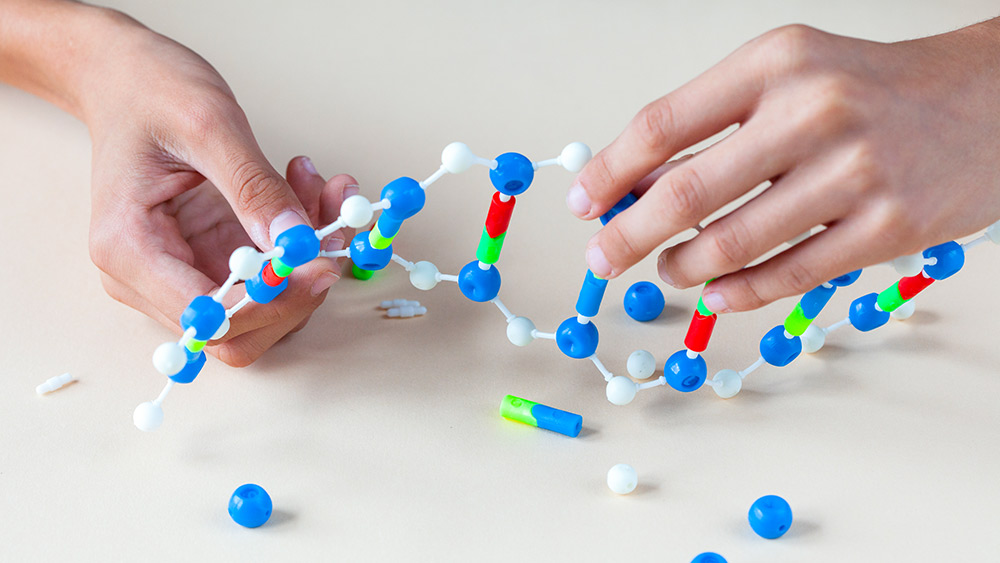
What big idea can you create with cardboard and Lego pieces? In the hands of a group of high school students, you might find the answer to reducing space debris or a dome to filter pollution.
Texas A&M University’s Spark! PK-12 Engineering Education program offered a free five-day virtual camp this summer to high school students in the 9th through 12th grades. The “What’s the Big Idea?” camp attracted students from multiple areas around Texas, including Corpus Christi, El Paso and Los Fresnos, interested in learning engineering concepts.
Fourteen students and six camp mentors gathered virtually to hash out various engineering ideas and concepts. Each day the students were exposed to various components of engineering, such as the design process, problem justification, brainstorming and research tools.
Each student was provided a maker kit of supplies worth about $100, including cardstock, wheels and gears, Lego sets, chenille stems, glue and tape — all things they could use to do low-fidelity prototyping of their ideas.
Using the maker kit and an engineering journal provided by the camp, students would start the day with a “brain starter.” Pam Simmons-Brooks, the Spark! program manager, gave the students a prompt and the task to invent something within 15 minutes, such as a wearable medical device. When the time was up, the students would then share their ideas, what the invention would do and the thoughts behind it.
“My favorite part of the camp was the brain starters,” said Paulina Lopez. “It was fun to come up with ideas and bring them to life.”
On the first day, the students formed teams of three to five to work together to solve an engineering goal or problem. The students were challenged with not only coming up with an idea but figuring out how to solve a problem, looking at the research already done, then bringing that information together in a presentation to be given at the end of the week to a panel of experts.
The camp mentors, who are current and former students in the Texas A&M Engineering Academies, assisted the campers in working out their invention ideas through Zoom breakout rooms.
“This camp felt like future preparation,” said Michelle Alcala. “I loved how, while we had assistance, we also had independence in our work. It’s almost as if we were already in the field.”
In addition to the daily schedule, an extra camp was offered to the students Monday through Wednesday evenings. During that time, the students were able to participate in a 4D printing workshop presented by Dr. Jeeeun Kim, assistant professor in the Department of Computer Science and Engineering and director of the Human Computer Interaction Engineering and Design Lab.
In the 4D workshop, the students were introduced to various 4D printing techniques and expected to fabricate real-world artifacts (e.g., wearables) with the provided material and information. Workshop kits were shipped to the participants ahead of the camp, which included various samples of previously printed 3D shape memory polymer (SMP), fabric, thread for sewing, printed circuit boards to control heating of conductive thread, SMP printed in the form of weavable looms to make artifacts, 3D-printed polyvinyl alcohol weaving guides that could be stuck to the SMP looms and miscellaneous craft material.
The final day of camp featured the team presentations. Each team was given four minutes to pitch their “big idea” to a panel of engineering experts. The team members all participated virtually in presenting the pitch explaining their concept — pitches included a description of the goal or problem, any constraints, their methods to creating the prototype, projected costs for the project, as well as the results and feasibility of their idea.
The students’ big ideas included “How Can We Reduce Space Debris?” and “Providing an Affordable and Usable Prosthetic.” Each presentation required presentation slides, a digital poster quad chart slide and the project prototype.
The expert panel, consisting of Rodney Boehm, director of Texas A&M Engineering Entrepreneurship and associate professor of practice; Randy Brooks, associate professor of practice at the Texas A&M Engineering Academy at Blinn College-Brenham; and David McCarroll, associate professor of practice for the Texas A&M-Concho Engineering Academy at Midland College, then asked the teams various questions about their design and process. This gave the students the ability to defend their idea, including how the project is an improvement or advancement over what is currently available and the applications and impact such an idea could have.
“My favorite part of camp was the fact that we were encouraged to think freely and explore our creativity,” said Manuela Gracia. “This program, from the start, gave us beneficial insight on what we are to expect from the future, from the process of coming up with something to how we are to present it.”